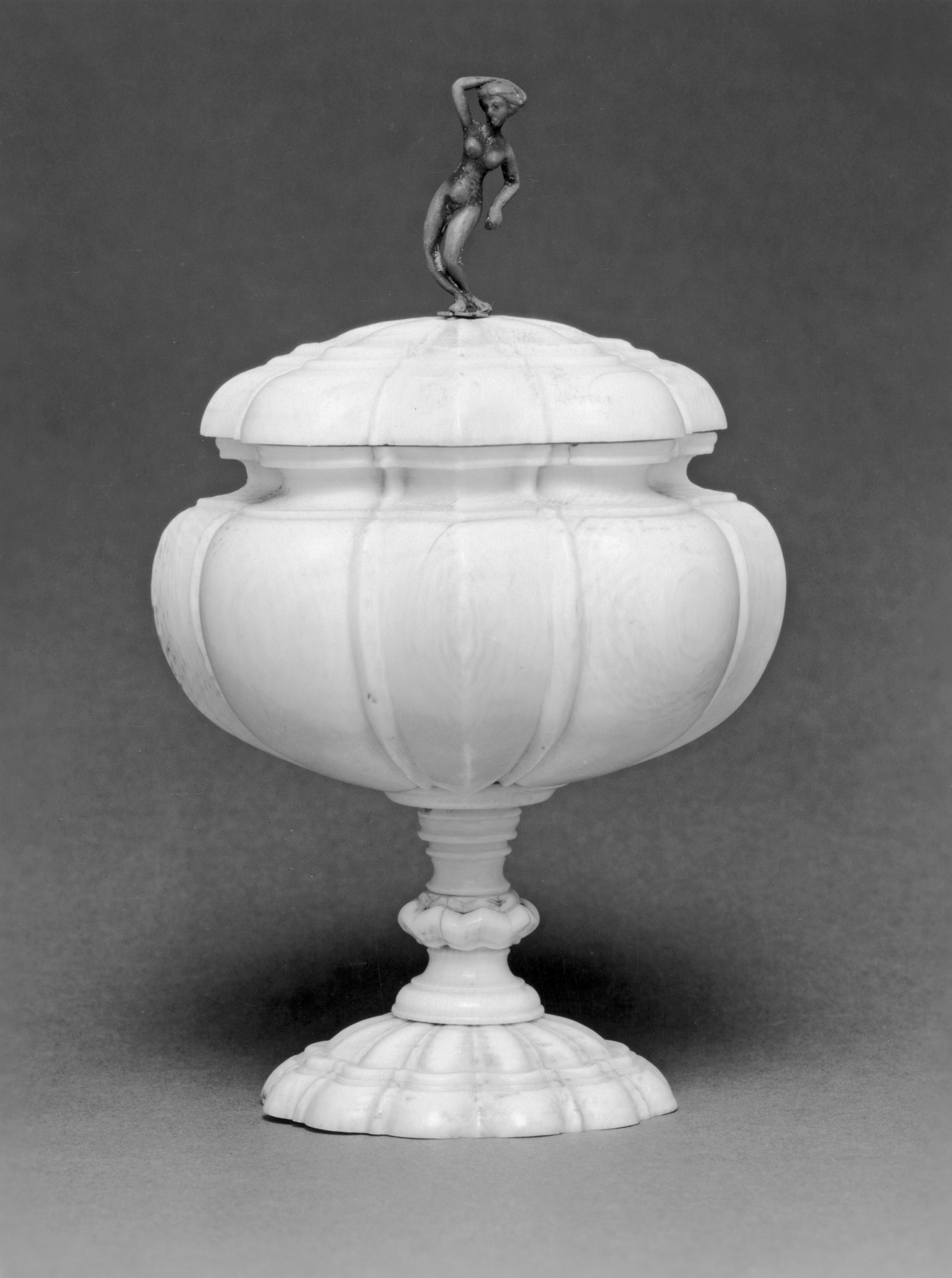Turned Cup
(Baroque Europe )
With the exception of the tiny figure of Venus in silver atop the lid, this covered cup or chalice is formed of ivory segments, some of which were "turned" on a lathe, a machine that holds the material, such as a piece of ivory or wood, and rotates it at high speed against the tool that shapes it. During the 1500s, technical advances enabled the design of both utilitarian and decorative objects to reach high levels of complexity.
In central Europe, where the technique was most practiced, noblemen and even sovereigns such as Emperor Rudolf II took advantage of the mechanical process to create objects with virtuosic qualities. This relatively simple chalice, in contrast to the complex objects made by master turners, is what such a nobleman might make.
Provenance
Provenance (from the French provenir, 'to come from/forth') is the chronology of the ownership, custody, or location of a historical object. Learn more about provenance at the Walters.
[Paris]; Henry Walters, Baltimore, 1929, by purchase; Walters Art Museum, 1931, by bequest.
Exhibitions
| 1971-1972 | World of Wonder. The Walters Art Gallery, Baltimore. |
Conservation
| Date | Description | Narrative |
|---|---|---|
| 10/1/1971 | Treatment | cleaned |
Geographies
Germany (Place of Origin)
Measurements
H: 4 5/16 × W: 2 3/4 × D: 2 3/4 in. (11 × 7 × 7 cm)
Credit Line
Acquired by Henry Walters, 1929
Location in Museum
Accession Number
In libraries, galleries, museums, and archives, an accession number is a unique identifier assigned to each object in the collection.
In libraries, galleries, museums, and archives, an accession number is a unique identifier assigned to each object in the collection.
71.339


